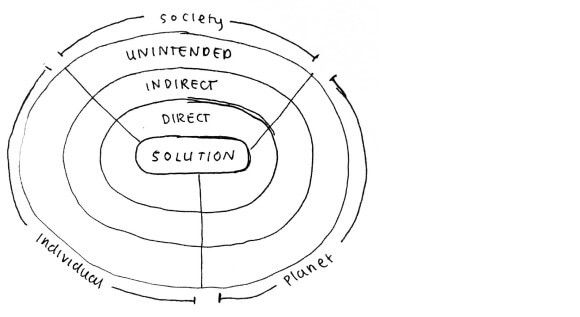Jul 19, 2021 | by Budi Tanrim
Ethical Design: Layer of consequences
A car used to be an innovative solution. But now? It creates an emission problem.
In 1886, Carl Benz applied for a patent for his vehicle powered by a gas engine. This patent was the birth of the modern car. I don’t think Benz woke up one day and thought, “What a great day to invent the machine to harm our planet.”
That is an example of unintended consequences. It can create harm for our society and planet. Even though it’s unintended, it doesn’t mean it’s justified.
I don’t mean to pick on Twitter. But it serves as a great example. Twitter’s mission is to give everyone the power to create and share ideas instantly without barriers. While this mission empowers people, it has many other consequences, such as cyberbullying or fake news that can confuse society.
This condition raises a question: How can we be more mindful of this unintended consequence?
There’s a framework I’m thinking of using in my team: Layer of consequences.
The idea is to use this framework as a reflection tool whenever we think of a solution. Let’s say we have a potential solution we want to pursue, and we believe it solves the problem we framed. We then put our solution in the center and radiated the 1) Direct consequence, 2) Indirect consequence, 3) Unintended consequence.
The consequences can be positive or negative.

For example: If we want to create a chat application. The direct consequence would help people to communicate with each other. The indirect consequence? People might get scam. The unintended consequence? People share fake news that misleads people to take harmful action for themselves.
As a practitioner, we might say this adds another layer of complexity. But, if we don’t start intentionally talk about this and practice this with our team. We might contribute to more harm than positive impact.
Hi, this blog is no longer active. I move to substack. You can subscribe below or go to newsletter.buditanrim.co



